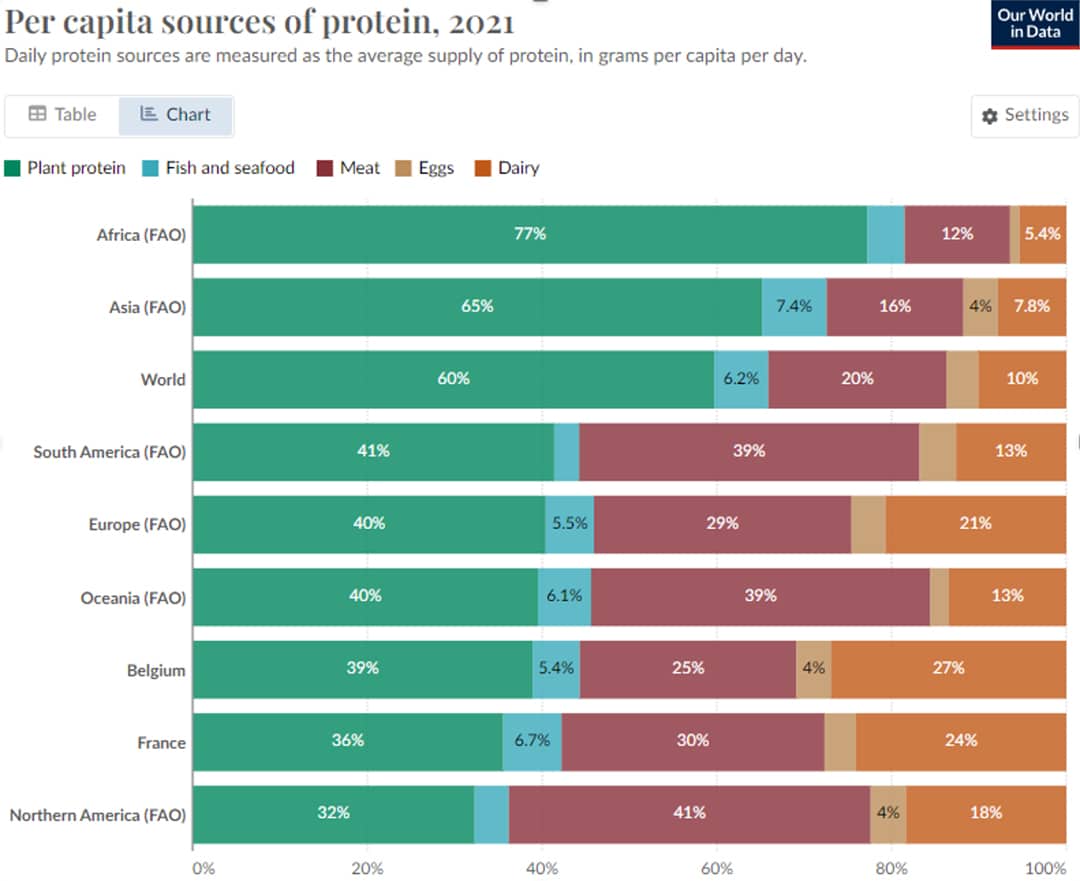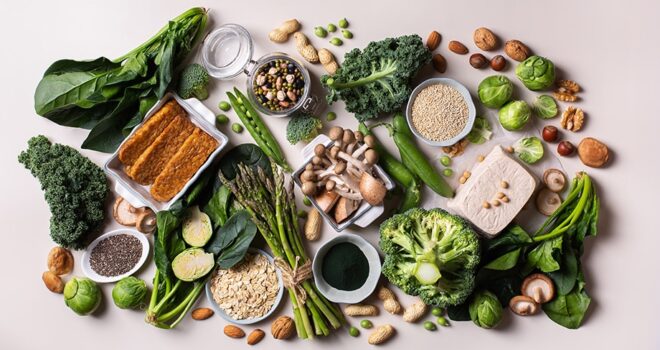For our health and that of the planet, food needs to be more plant-based while ensuring sufficient protein intake. In most economically developed countries, this entails reducing animal-based proteins and opting for plant-based proteins. This is called a “protein shift”.
Climate change, biodiversity loss, the impact of livestock farming on greenhouse gas emissions, the impact on health of diets overly reliant on meat… In the past several years, there has been increased awareness about the interdependency of these factors, as supported by the One Health concept, which states that the health of people, animals and the environment are interconnected. Food systems must evolve and become more resilient while meeting the nutritional requirements of populations. Leading this food transition is the protein transition, as largely demonstrated in the EAT Lancet (1) planetary health plate which aims to greatly reduce the consumption of meat and replace it, primarily with legumes. In Europe, the protein transition is part of the European Green Deal’s Farm to Fork strategy which aims to make food systems fair, healthy and environmentally-friendly (2).
30% of Europeans in favour of a flexitarian diet
The demand for alternatives to animal proteins is booming. A large study (3) among more than 7500 people from ten European countries (Germany, Austria, Denmark, Spain, France, Italy, the Netherlands, Poland, Romania and the United Kingdom) surveyed attitudes towards plant based foods. Results showed that 7% of respondents have adopted a vegan or vegetarian diet; 30% are flexitarian. Nearly 40 % of European consumers plan on eating less meat in the near future, whereas almost one in two people (46%) have already reduced their consumption of meat. Nearly one in three people (30%) said they plan to reduce their consumption of dairy products. Higher still is the percentage of flexitarians (73%) who have greatly reduced their consumption of meat.
Read also: Plant-based proteins to feed the world
Shifting the ratio of animal/plant-based proteins
The protein transition does not concern all countries equally. It mostly concerns countries or regions that have a high ratio of animal to plant-based proteins. While the global ratio is 40/60, it is 59/41 in South America, 60/40 in Europe and Oceania, 64/36 in France, and 68/32 in North America. For many of the countries in which the ratio is high, the goal is to flip it and move towards the global ratio all over the world. It would be especially beneficial to reduce meat proteins and meat products, which have a more significant impact on the environment and on health.
Plant-based proteins are essentially found in legumes, cereals, nuts and grains. Associating several sources of plant-based protein in one’s diet, as opposed to consuming one source of plant-based protein at a time, makes it easier to attain dietary protein requirements.

Data source: Food and Agriculture Organization of the United Nations (2023)



 Fennel
Fennel  Brussels sprouts
Brussels sprouts  Vegetable garden: growing eggplant
Vegetable garden: growing eggplant 









